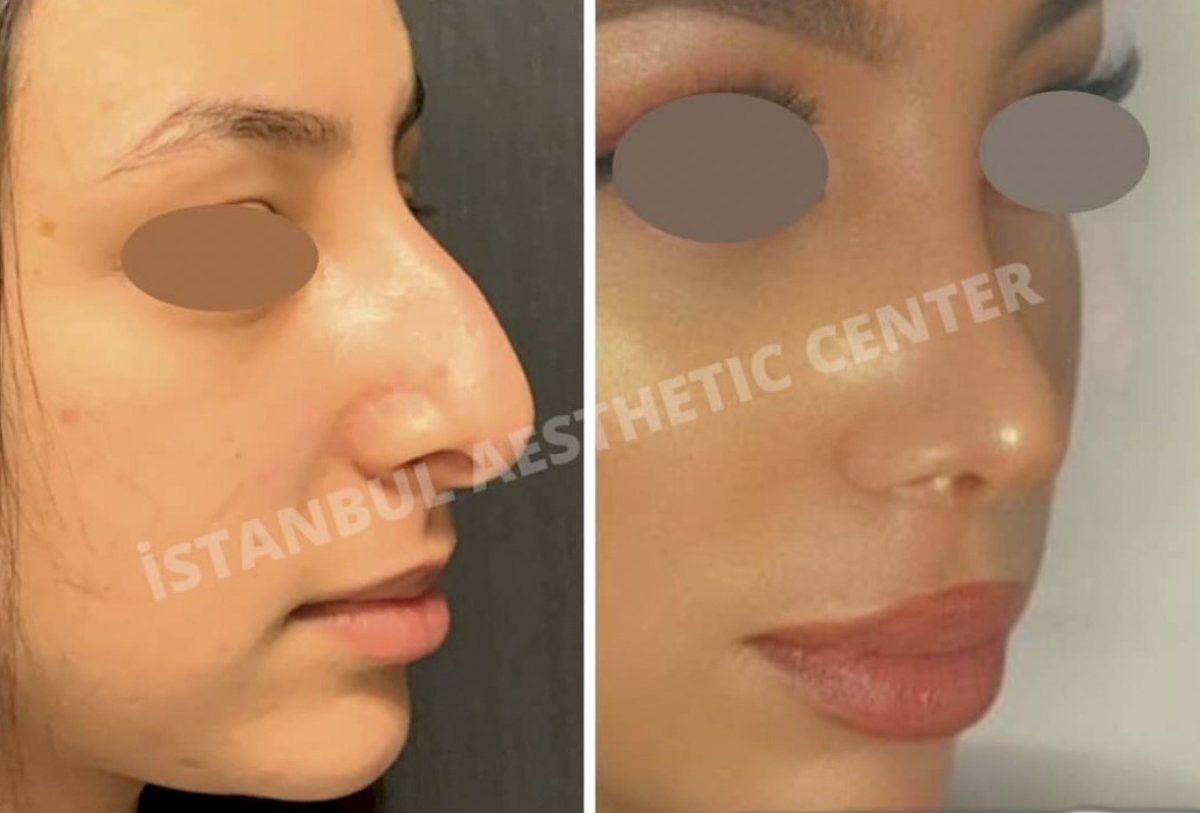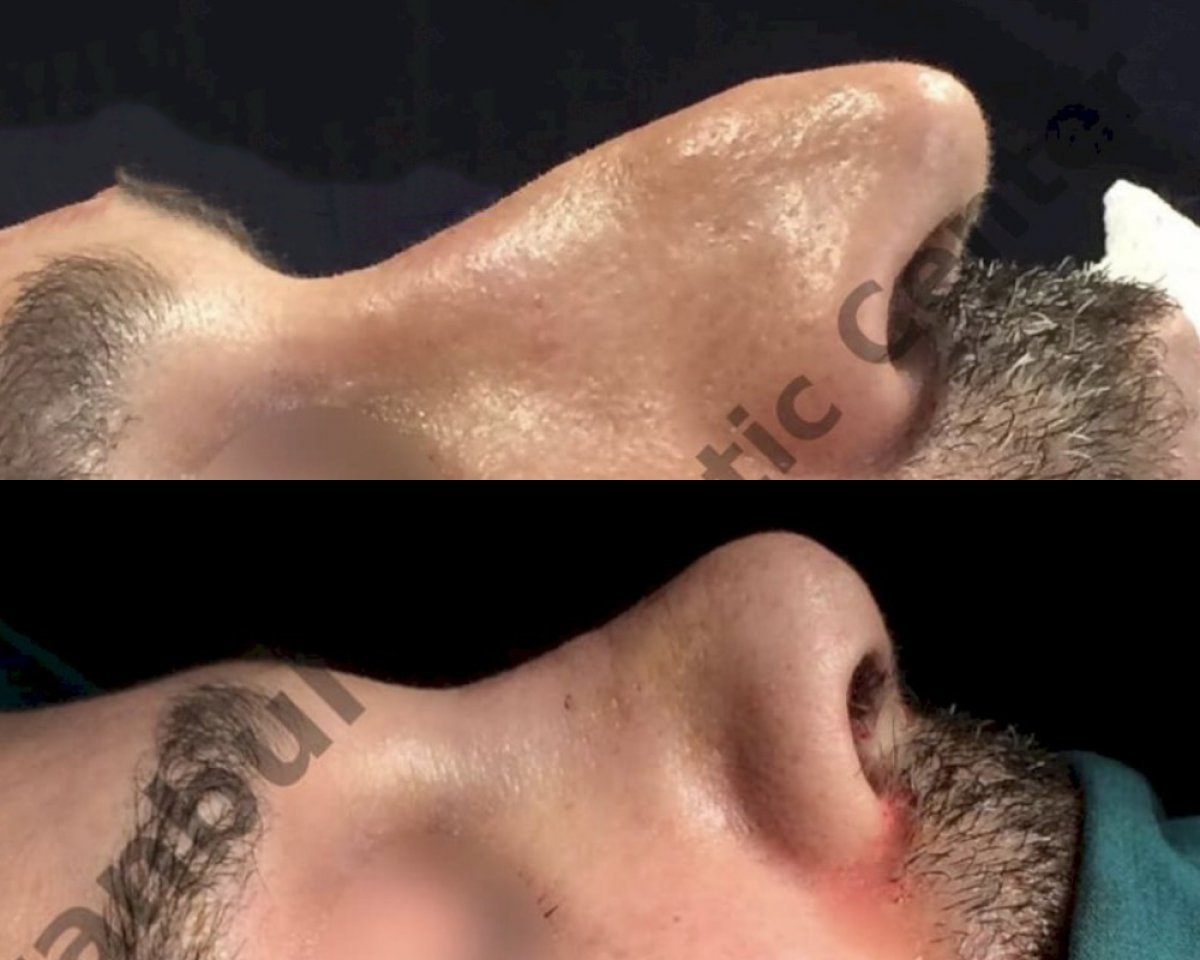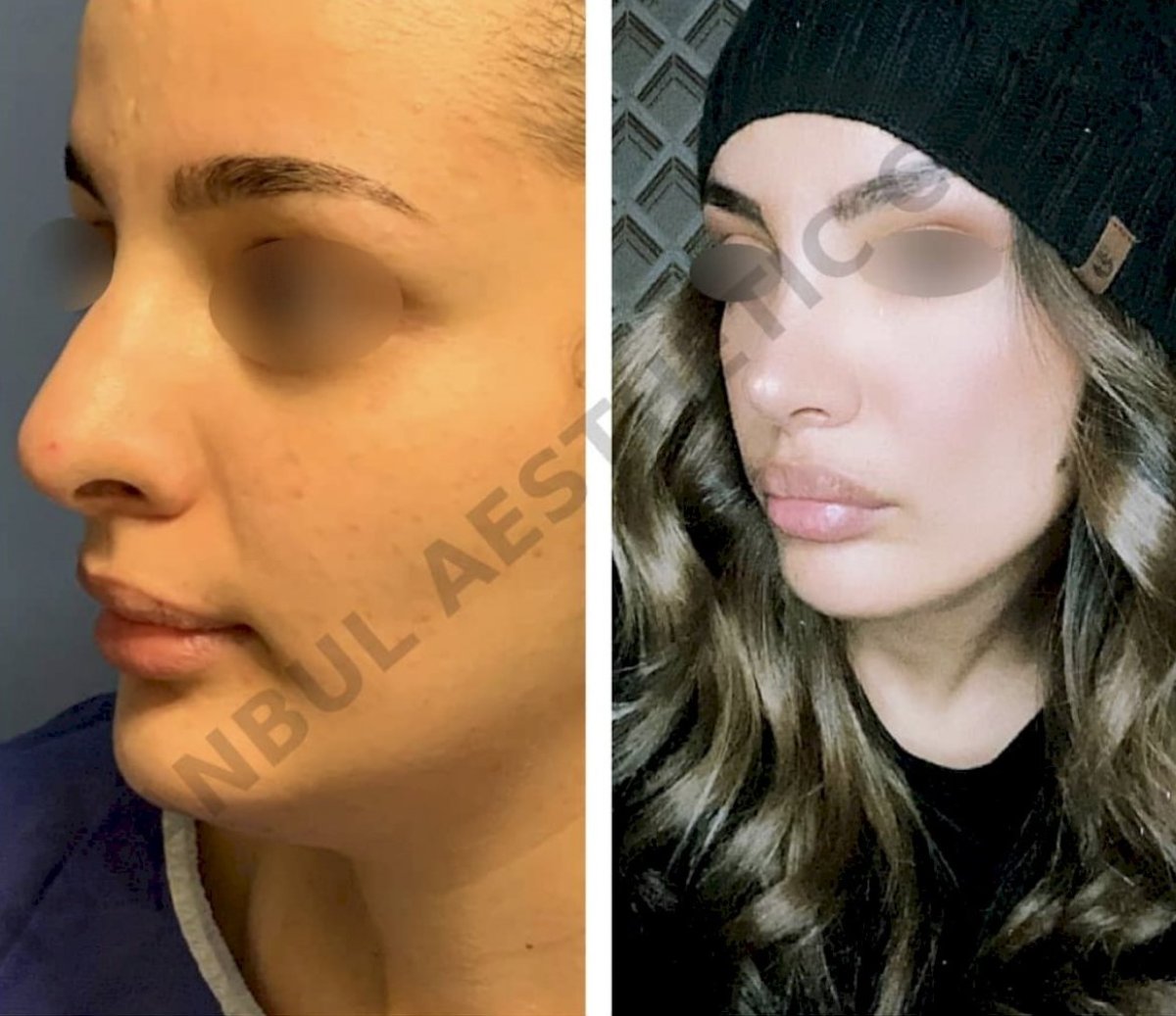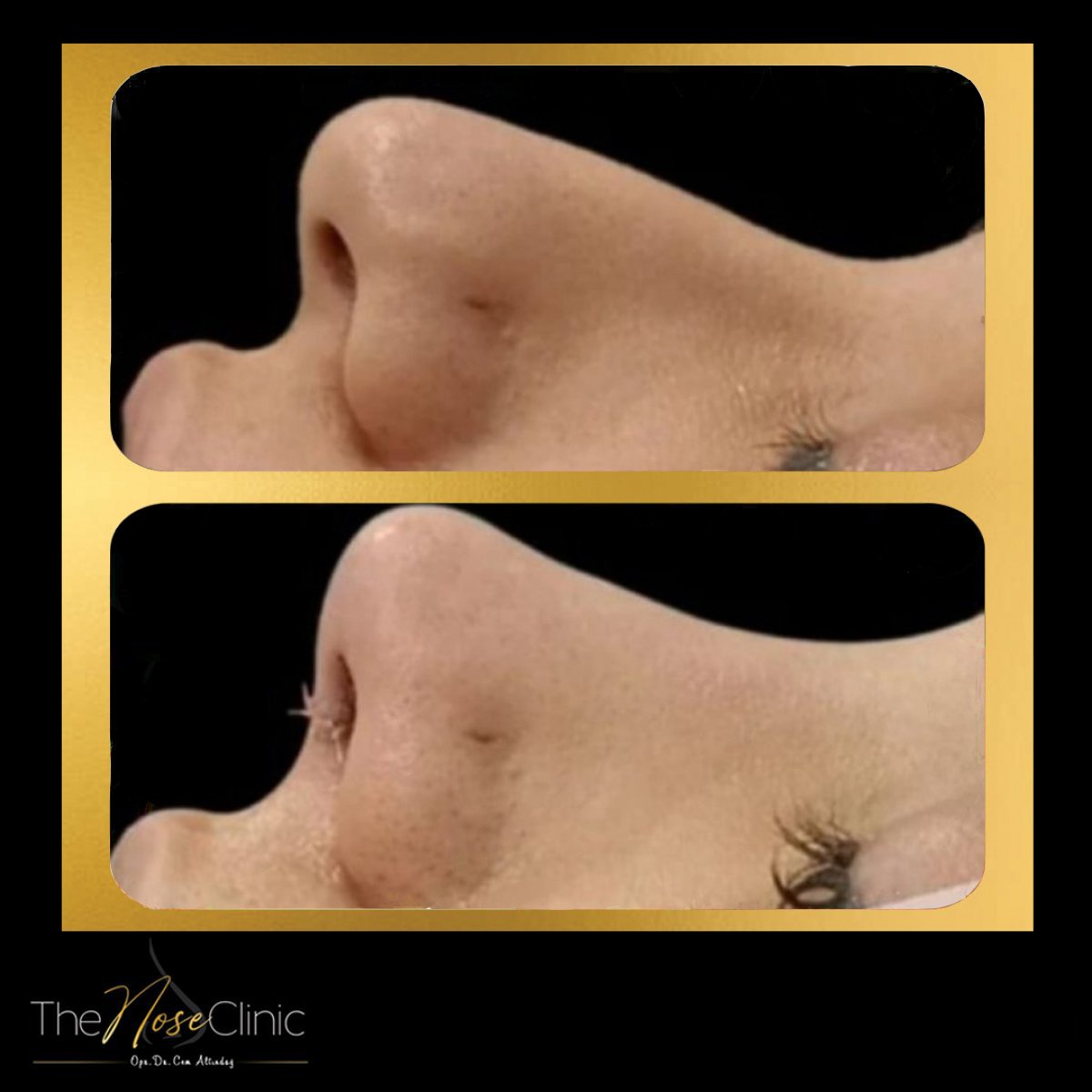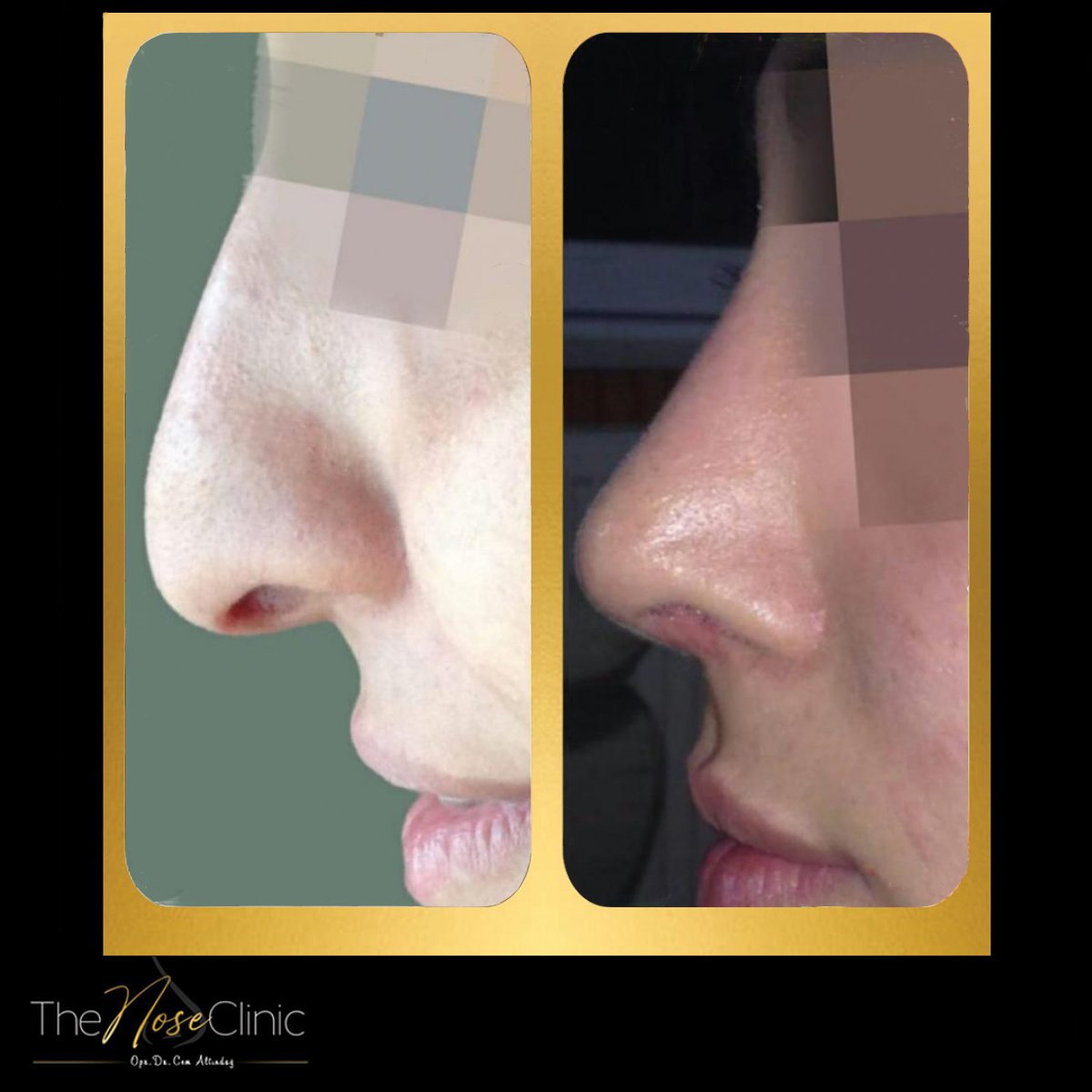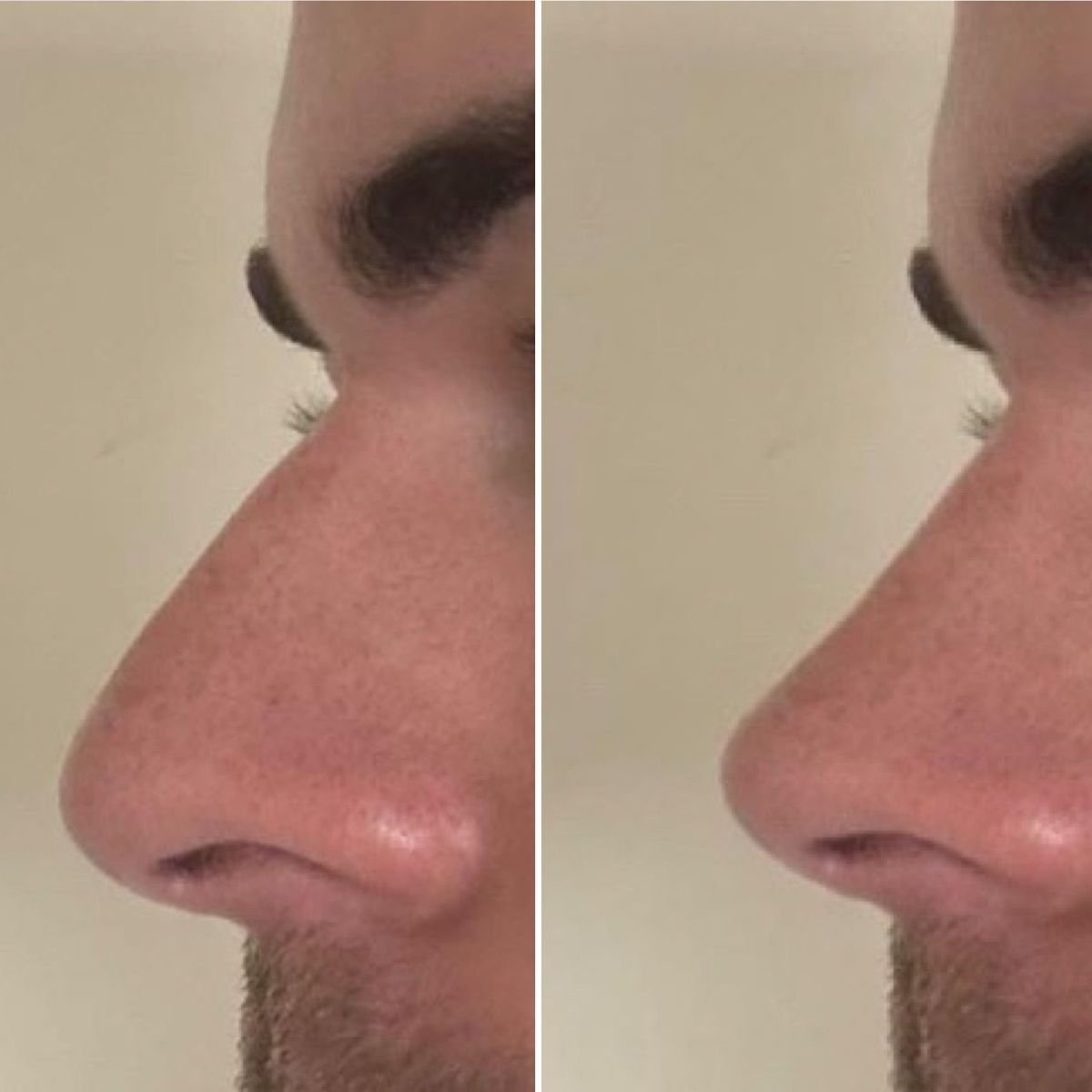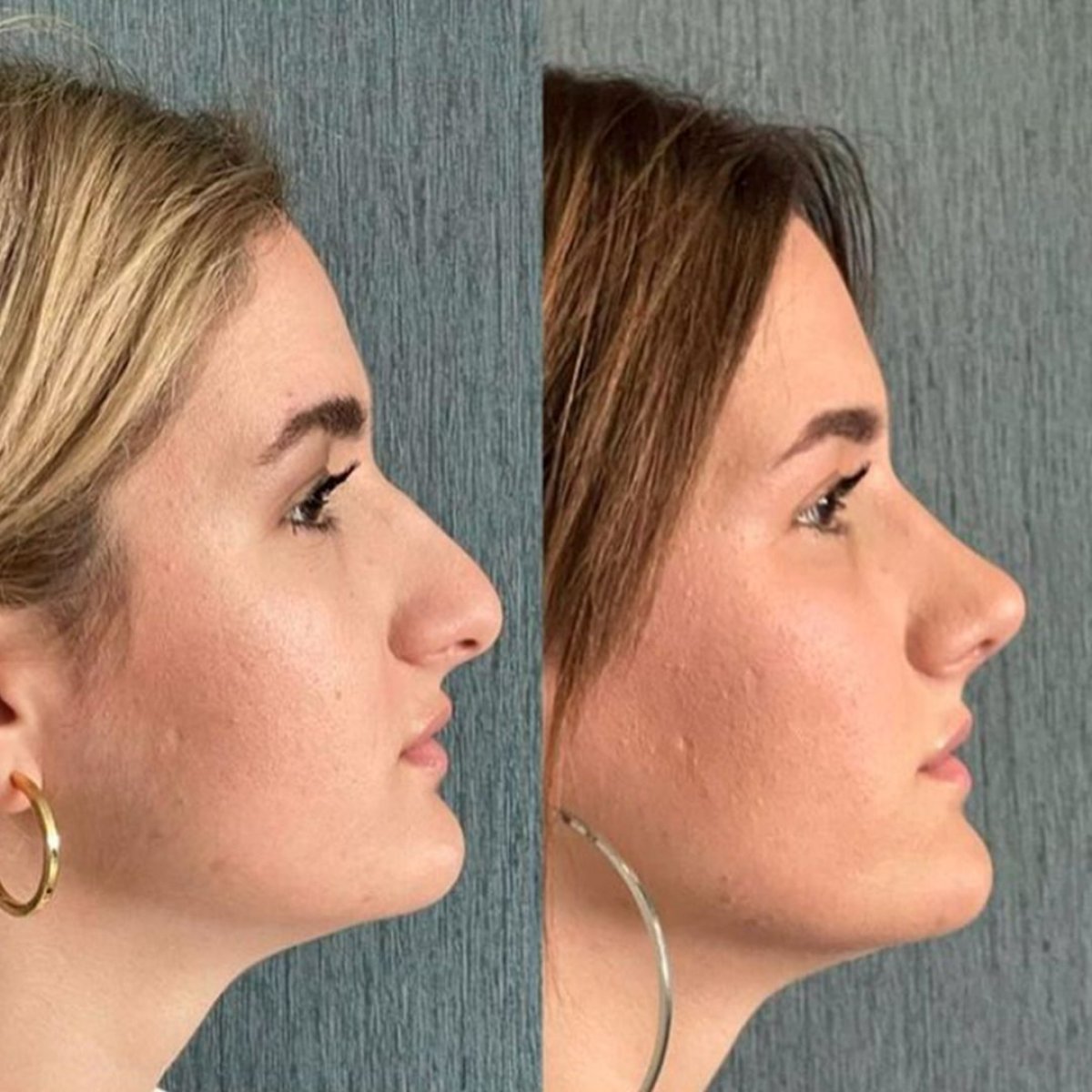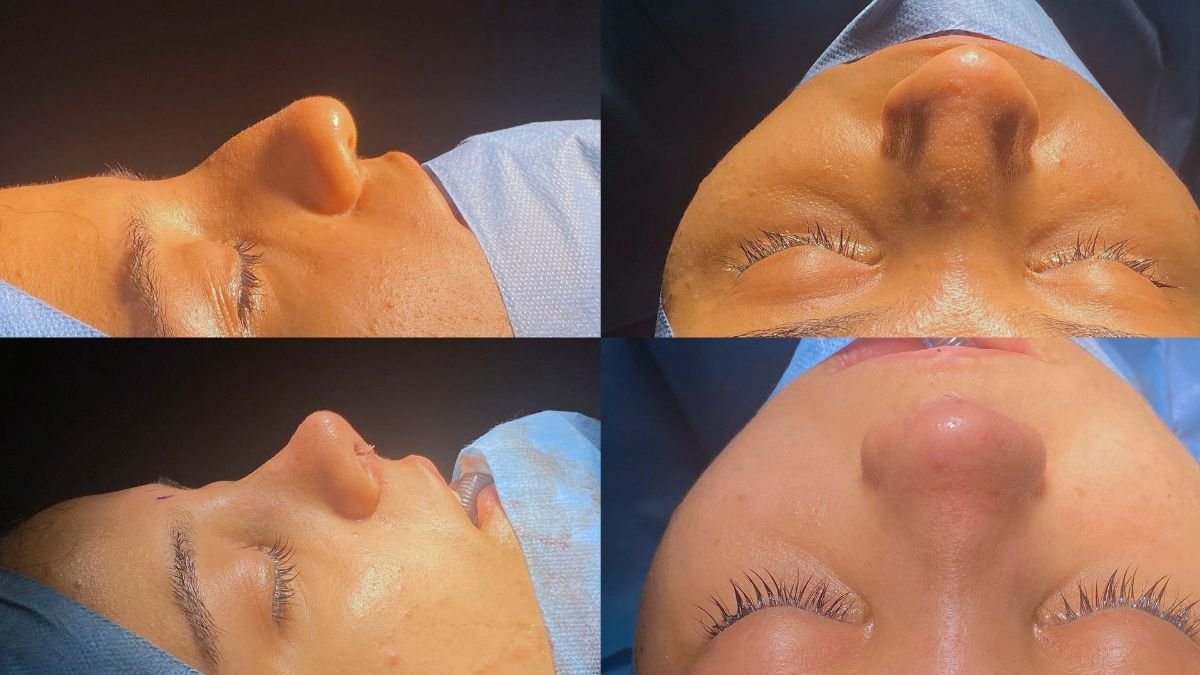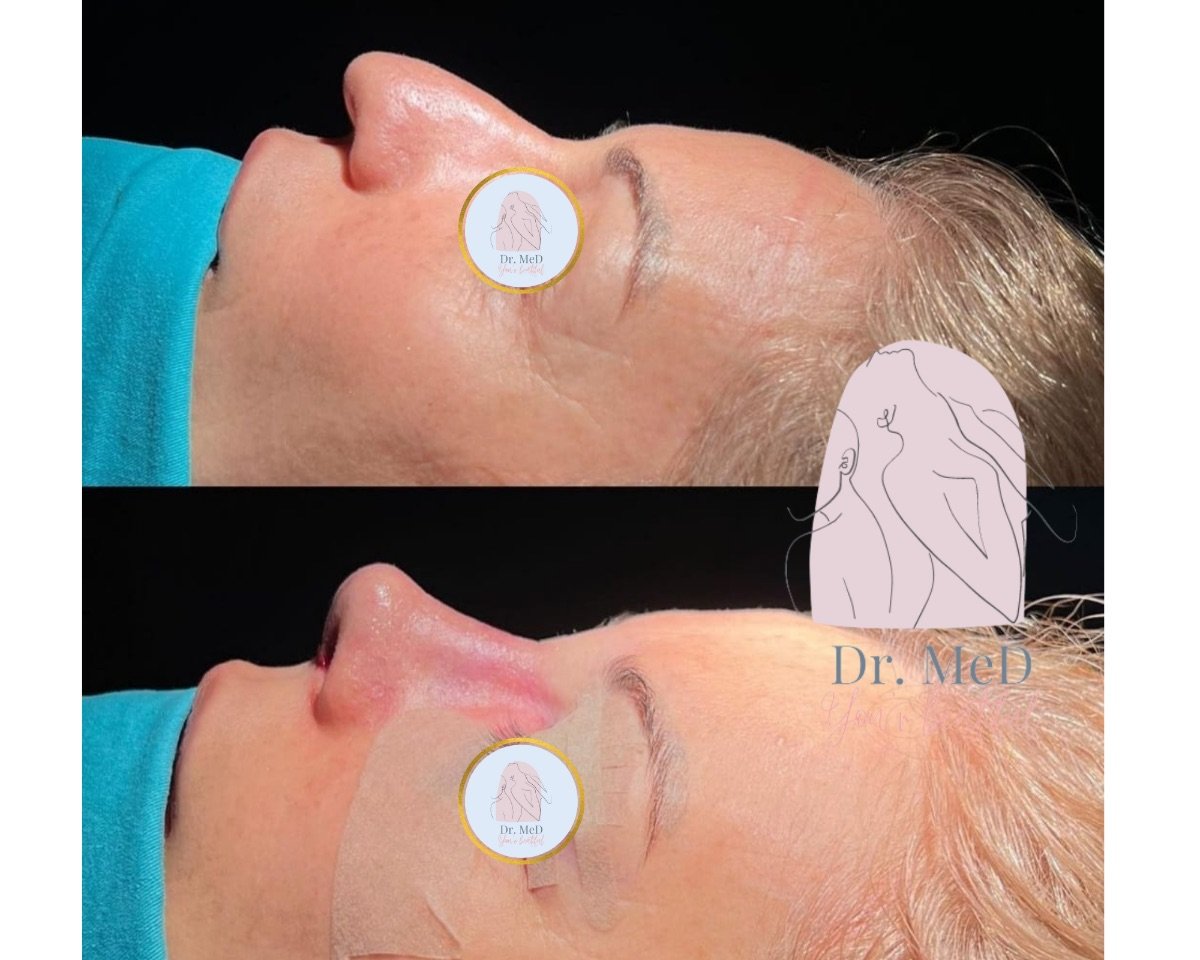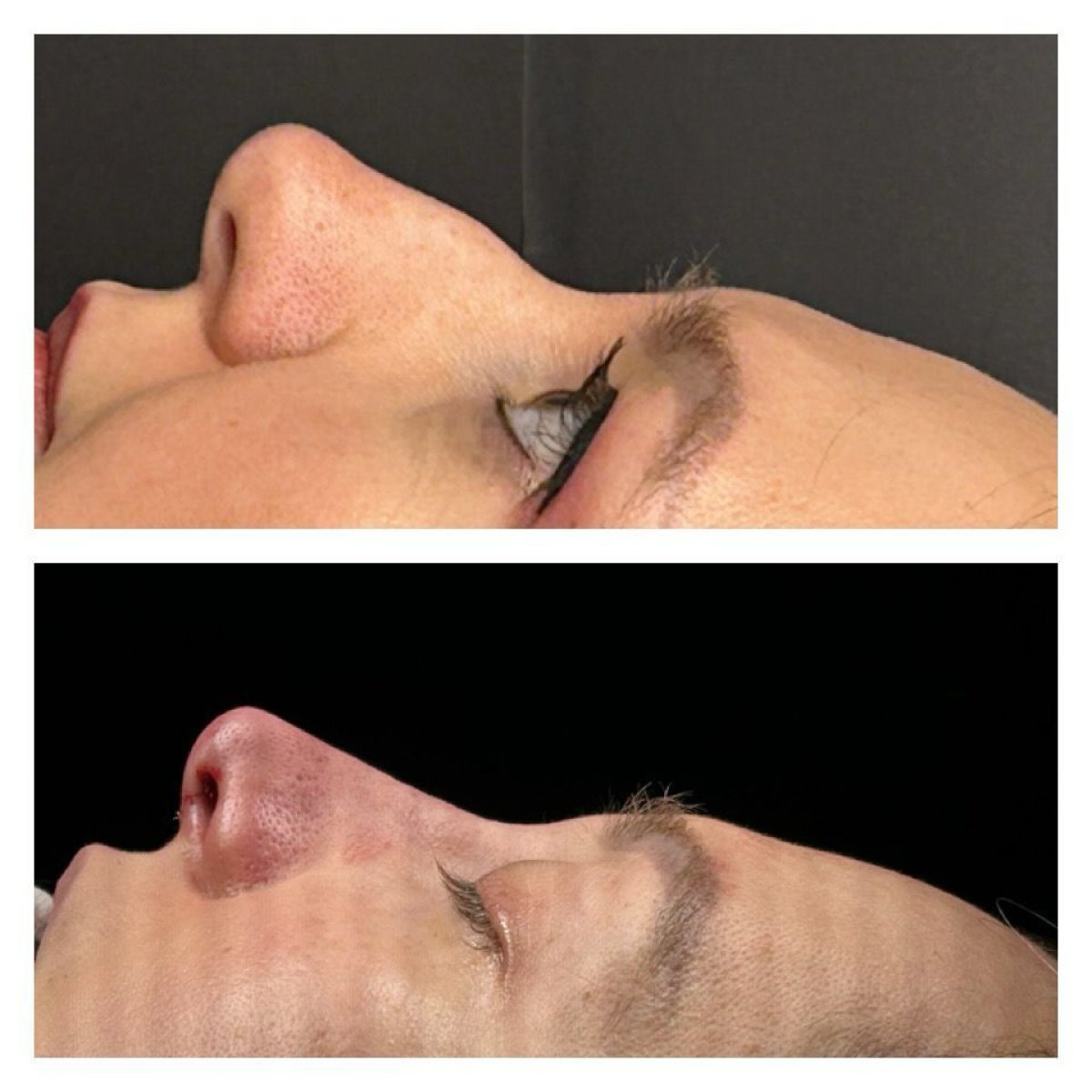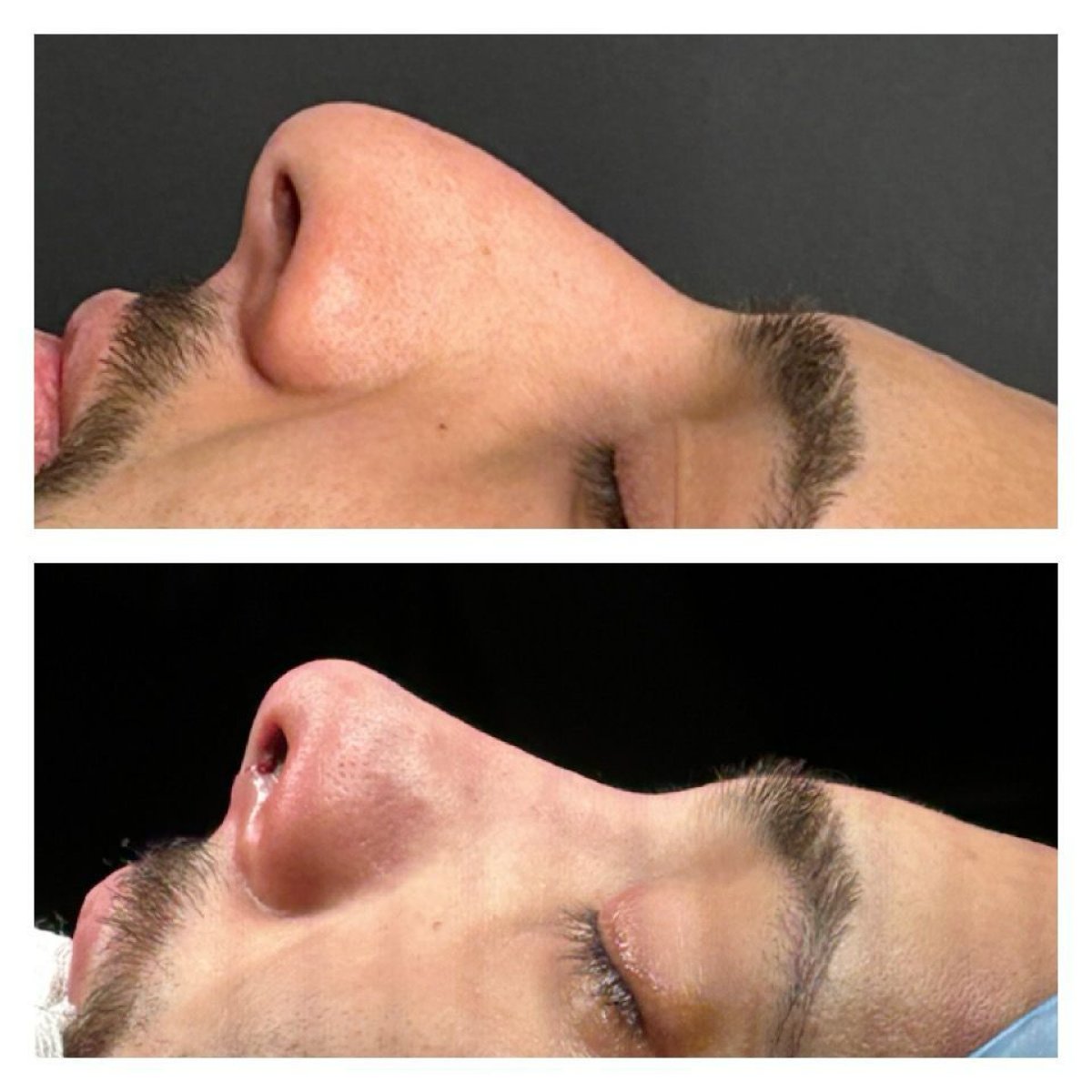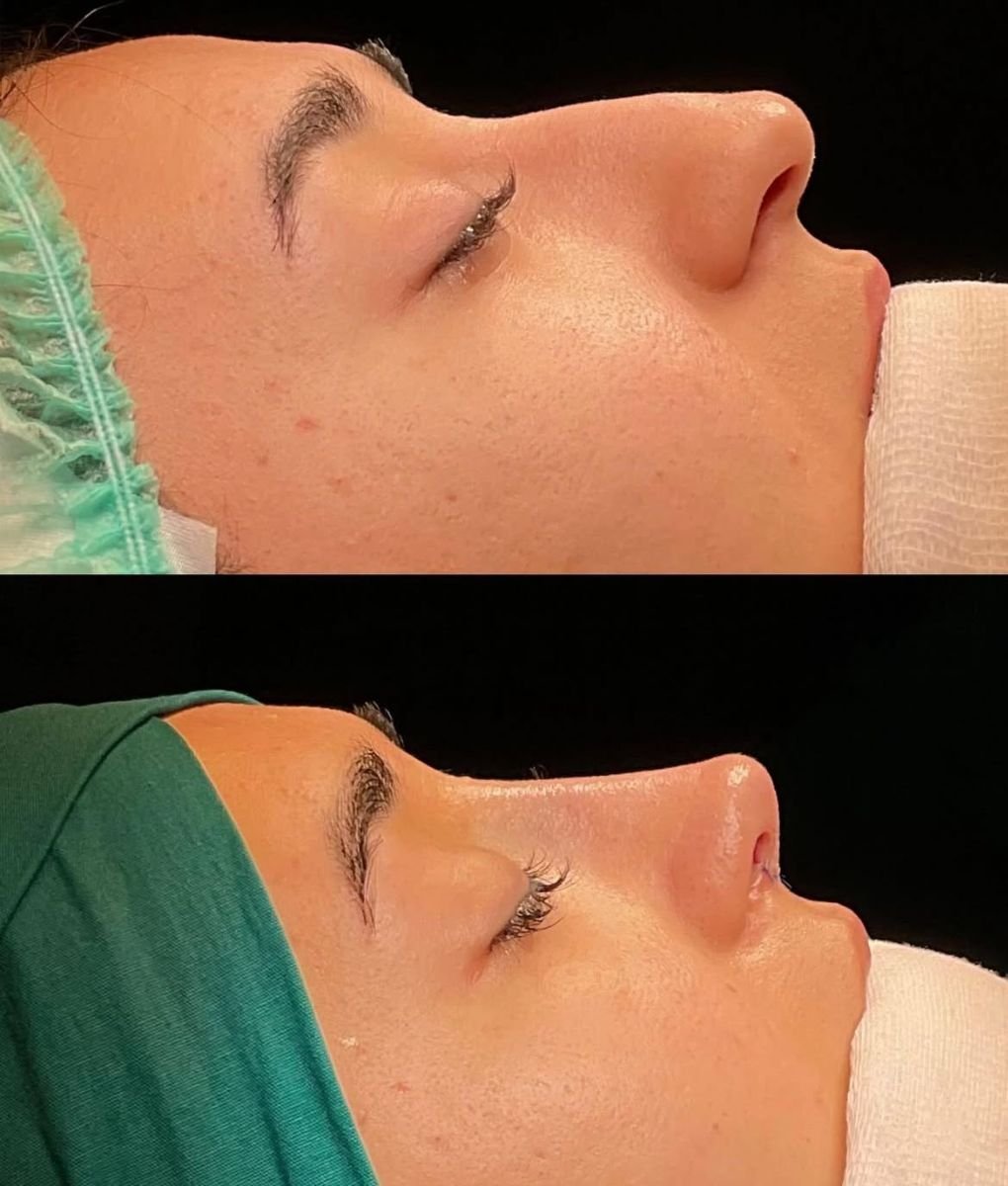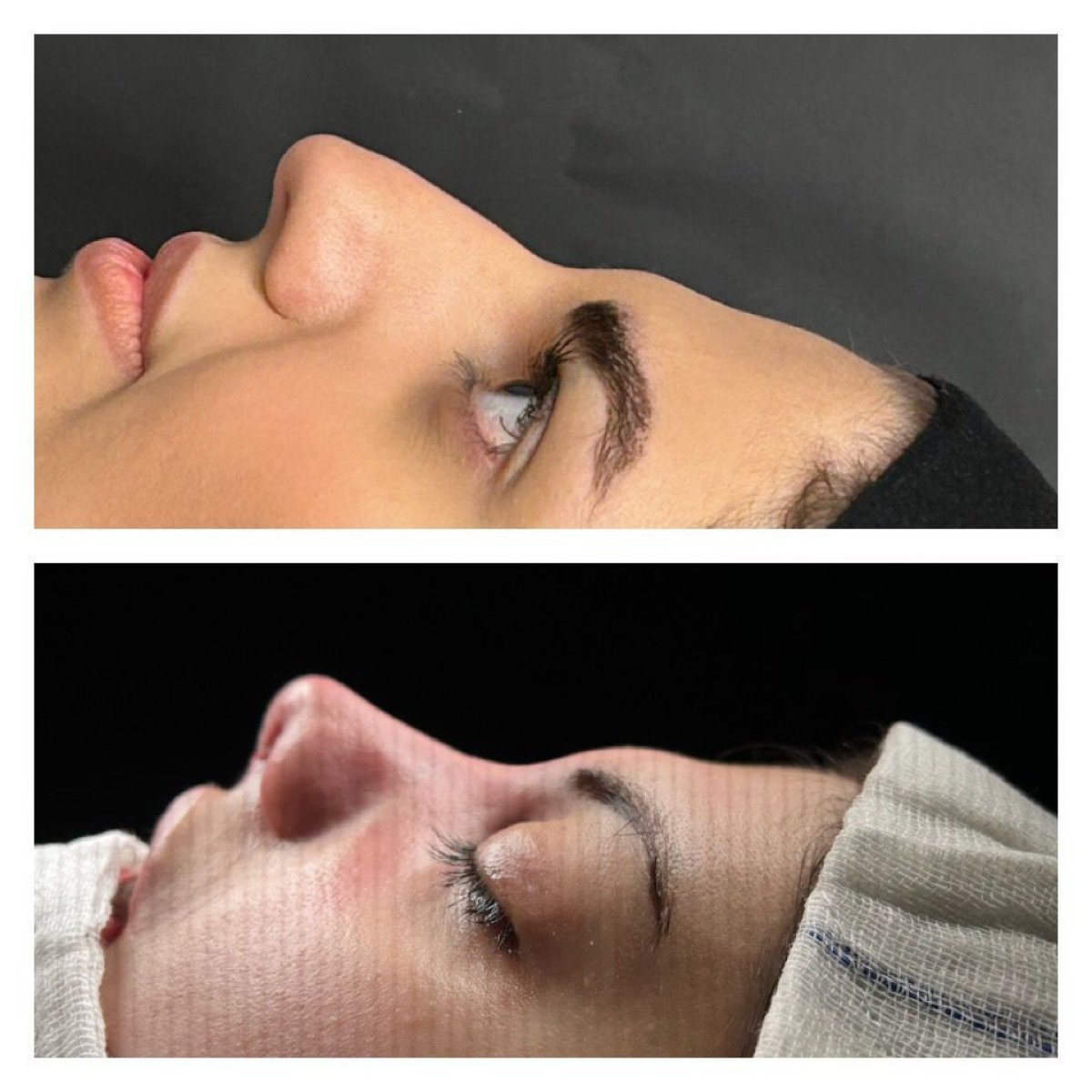What Is Rhinoplasty?
Rhinoplasty (nose job) is a surgical procedure that reshapes the nose for aesthetic or functional reasons. It can refine the shape, adjust the size, correct asymmetry, or fix breathing problems.
Key advantages of rhinoplasty, outlined by the Cleveland Clinic rhinoplasty overview, are:
- More balanced facial features
- Correction of nasal humps, wide nasal bridge and nostrils, or bulbous tips
- Improved breathing and nasal function
- Boost in self-confidence
- Long-lasting, natural-looking results
What Are the Advantages of Rhinoplasty in Turkey?
1. Unmatched experience
Turkey ranks 2nd in the world for nose surgery procedures, performing 56,700 rhinoplasty procedures in 2022. This is almost 2x as many as the US and 9x more than the UK. With this level of experience, Turkish surgeons have honed their skills to perfection.
2. Skilled nose surgery specialists
Turkey's popularity is demonstrated by over 5.5 million rhinoplasty requests served through Bookimed alone, with 425 specialized clinics including top-rated facilities like The Nose Clinic (4.8/5) and Istanbul Aesthetic Plastic Surgery Center (4.7/5). These surgeons have 25+ years of experience and are often trained in the US and Europe. Turkish cosmetic surgeons are members of such organizations as:
- American Academy of Cosmetic Surgery (AACS)
- Rhinoplasty Society of Europe (RSE)
- European Association of Plastic Surgeons (EAPS)
- American Society for Plastic Surgery (ASPS)
3. Affordable nose job costs
A nose job in Turkey costs 60–75% less than in the US or UK. Turkey offers €2,500–€4,500 compared to £10,000–£16,000 (€11,500–€18,400) in the UK and $12,000–$24,000 (€11,000–€22,000) in the US. Lower costs don't mean lower quality—just lower operating expenses and government-supported medical tourism.
4. State-of-the-art clinics
Leading Turkish facilities such as The Nose Clinic (4.8/5 rating) and Istanbul Aesthetic Plastic Surgery Center (4.7/5 rating) meet JCI and ISO standards by providing world-class safety and hygiene. Turkey has 46 JCI-accredited hospitals, ranking 2nd worldwide for JCI-certified medical facilities.
They also use advanced technologies, such as 3D imaging and simulation, so patients can preview their results before surgery.
5. All-inclusive nose job packages
Turkey's all-inclusive packages cover all the essentials, like consultations, accommodation, and transfers. Since these are usually billed separately in countries like the US, nose surgery in Turkey ends up more cost-efficient even when you factor in flight tickets.
Rhinoplasty vs. Septoplasty: What's the Difference?
These procedures are often confused, but they serve different purposes.
- Rhinoplasty focuses mainly on reshaping the nose. If your breathing improves as a side effect of changing the structure, that's a bonus—but it's not the primary goal.
- Septoplasty is strictly medical. It straightens a deviated septum to improve breathing, the cartilage inside the nose that separates the nostrils. Septoplasty does not alter the external appearance.
- Septorhinoplasty is a combined procedure for people who want to reshape their nose and fix serious breathing issues. It includes a full septoplasty and external reshaping.
Who Is a Good Candidate for Rhinoplasty?
You may be a good candidate if:
- Your nose has fully developed (this happens by 16–17 years in women and around 18 in men).
- You are in good overall health.
- You don't smoke.
- You understand what a nose job can and can't achieve.
- You are doing it for yourself, not because of external pressure.
Types and Techniques of Rhinoplasty in Turkey
Open vs. Closed Rhinoplasty
- Open rhinoplasty. The most common technique, used in 89% of procedures according to systematic reviews. Plastic surgeons make a small incision under the nose, which gives full access to reshape bone, cartilage, and tissue. This technique provides 360-degree visualization through a small incision, making it the preferred choice for major reshaping and revision cases. While it has a slightly higher reoperation rate (2.73% vs 1.56% for closed), it allows for more precise structural modifications.
- Closed rhinoplasty. All incisions are hidden inside the nostrils and leave no visible scars. Using only endonasal incisions, this technique offers faster initial recovery but limits surgical access for complex cases. Best for minor adjustments with a lower reoperation rate of 1.56%.
Specialized techniques
- Tip rhinoplasty. Refines only the nasal tip. This procedure is perfect for correcting bulbous, upturned, or drooping tips without changing the bridge.
- Revision rhinoplasty (secondary rhinoplasty). Corrects asymmetry, breathing issues, or unnatural results for those unhappy with previous nose surgery. More complex than primary procedures, requires an experienced surgeon.
- Ethnic rhinoplasty. Designed for thicker skin or flatter nasal bridges in Middle Eastern, African, and Asian noses. This approach enhances natural beauty while preserving unique ethnic features.
- Alarplasty. Reduces nostril width, often combined with nose surgery for better facial harmony.
Innovative and minimally invasive options
- Ultrasonic rhinoplasty. Uses sound waves for precise bone reshaping. Leads to less swelling and more refined results.
- Liquid rhinoplasty (non-surgical rhinoplasty). A non-surgical nose job uses fillers to smooth bumps or add volume. No downtime, but results last only 6–18 months.
How Does Rhinoplasty Surgery Work in Turkey?
|
Surgery duration |
Hospital stay |
Time before flying home |
|---|---|---|
|
1–3 hours |
1–2 nights |
At least 7 days |
Consultation and preparation
- Discussion with your surgeon. Define your goals, discuss technique options, and review expected results.
- Medical evaluation. Blood tests, imaging, and health checks to confirm you're fit for surgery.
- Pre-op instructions. Stop smoking, avoid blood-thinning medications, and plan time for recovery.
Nose surgery
1. Anesthesia. General anesthesia is used for patient comfort and safety.
2. Incisions. Plastic surgeons make incisions inside the nostrils (closed technique) or under the nose (open technique).
3. Nose reshaping. The surgeon adjusts cartilage and bone, refines the nasal tip, and corrects any structural issues.
4. Correcting the septum. If needed, the septum is straightened after reshaping to improve breathing.
5. Stitches and splint. The surgeon closes incisions with stitches. A nasal splint may be placed for a few days to maintain the shape.
Rhinoplasty Recovery Process
Recovery follows predictable stages: 50% of swelling resolves within the first 2 weeks, 95% by 6 months, and 97% by 12 months. The nasal tip, being the thickest area, takes longest to heal with final definition appearing between 6–12 months post-surgery.
|
Time after surgery |
What to expect and do |
|---|---|
|
Days 1–3 |
Swelling and bruising peak, and nasal congestion is common. Rest with your head elevated. Avoid touching your nose or bending over. |
|
Days 4–7 |
Breathing improves slightly. |
|
Day 7–10 |
The splint is removed. Most patients can return to work if they feel comfortable. |
|
Weeks 2–4 |
Bruising fades. Residual swelling remains but is less noticeable. Light exercise can resume. |
|
Months 2–6 |
The nose continues refining its shape. Subtle swelling, especially in the tip, is normal. |
|
Months 6–12 |
Final results settle as all swelling disappears. |
Tips to speed up healing
- Sleep with your head elevated for at least 2 weeks.
- Avoid blowing your nose for the first few weeks.
- Apply cold compresses to your cheeks or under your eyes
- No glasses or sunglasses for at least 4–6 weeks (use tape or special frames if necessary).
- Skip strenuous activities for 1 month.
- Protect your nose from impact—avoid crowded places and physical contact sports.
Rhinoplasty Risks and Possible Complications
According to a peer-reviewed study on rhinoplasty outcomes, 87% of patients achieve successful anatomical correction, with overall complication rates of 7.9% and revision rates of 9.8%. However, like any surgery, the procedure carries some risks, and it's important to be aware of them:
- temporary breathing difficulties due to swelling;
- infection (less than 1% of cases);
- nose bleeds;
- poor wound healing;
- temporary numbness;
- asymmetry;
- scarring;
- unsatisfactory aesthetic results requiring revision surgery.
In Turkey, the clinic will provide follow-up care and immediate medical attention if needed. After you return home, you can stay in touch with your doctor through remote consultation.
Choosing an experienced, board-certified surgeon significantly reduces risks. Bookimed can connect you with top specialists and help you find the best nose surgery option in Turkey for your case.
Patient Satisfaction and Long-term Outcomes
Patient satisfaction varies significantly by demographics and expectations. A comprehensive large-scale patient satisfaction analysis of 2,326 rhinoplasty patients found an overall satisfaction rate of 83.6%, with notable differences between genders: 87.6% of female patients reported satisfaction compared to 56.1% of male patients.
Functional satisfaction rates are typically higher, with 59% reporting functional improvement, 63.2% cosmetic satisfaction, and 70.9% psychological satisfaction. Patients with realistic expectations and those undergoing primary (first-time) procedures show higher satisfaction rates than revision cases.
A patient from the UK who underwent treatment at The Nose Clinic shared: "I breath perfectly now after surgery and my nose is a lot straighter. I felt very secure and taken care of through the entire experience."
Another international patient at The Nose Clinic reported: "The results AMAZING!!!! It looks so natural and matches my face perfectly. That is outstanding care!!"
Rhinoplasty Results: What to Expect
After 6–12 months, when all swelling is gone, the nose will appear more defined and proportionate to the face. If structural corrections were made, breathing will also improve gradually.
- Scars. Closed procedures leave no visible scars. Open surgery may have a small scar under the nose, but it fades over time.
- Longevity. Results are permanent and won't change unless affected by aging, injury, or additional surgery.
A recent patient at B.Care Medical Center shared: "I'm still healing from my surgery but so far I'm very happy with the result and would recommend the hospital and clinic, and would like to reassure anyone going abroad that you'll be in good hands! The care the team provided was amazing."
Preparing for Nose Plastic Surgery in Turkey
Turkish clinics make medical travel easy, but a little planning goes a long way. Here's what to keep in mind before your trip:
- Visa. If you're from the UK, EU, or US, you can stay in Turkey visa-free for up to 90 days. Travelers from other countries can get an e-Visa in minutes at evisa.gov.tr.
- Length of stay. Plan to spend at least 9 days in the country. Most patients stay 1 night in the hospital and 7+ days in a hotel for check-ups and recovery before flying home. If you prefer extra recovery time, 10–14 days are a good option.
- Currency and payment. Clinics accept Turkish Lira (TRY), USD, EUR, and GBP. Patients can usually pay using a credit card, bank transfer, or cash, but it's best to check with your clinic beforehand.
- Traveling alone vs. with a companion. Turkish clinics provide full assistance, so you can travel alone without worry. That said, many international patients feel more comfortable bringing a friend or family member for support. Some clinics even include hotel stays and breakfasts for companions in their nose job packages, so be sure to ask your provider.
How Much Does a Nose Job Cost in Turkey?
In Turkey, high-quality procedures typically cost $2,800–$7,500, depending on the clinic and surgeon. Thus, a nose job in Turkey is up to 70% more affordable than in the US or UK, where prices range from $10,000–$22,000.
Lower prices for nose plastic surgery in Turkey are due to lower operational costs, government support for medical tourism, and high competition among clinics.
As per Bookimed's Finance Policy, the prices displayed on the website reflect the clinic's official rates. Patients pay directly with no hidden fees.
What influences the nose job price in Turkey?
- type of procedure (for example, revision surgery is a more complicated procedure and costs more);
- surgeon's expertise;
- clinic's reputation;
- additional procedures and exclusive perks.
What is included in the rhinoplasty price in Turkey?
Unlike in the US and UK, where additional services cost extra, Turkish clinics offer all-inclusive packages that cover:
- Consultations and pre-op tests
- General anesthesia and post-op care
- Luxury 4–5 star hotel stays
- VIP airport and clinic transfers
- Follow-up appointments

